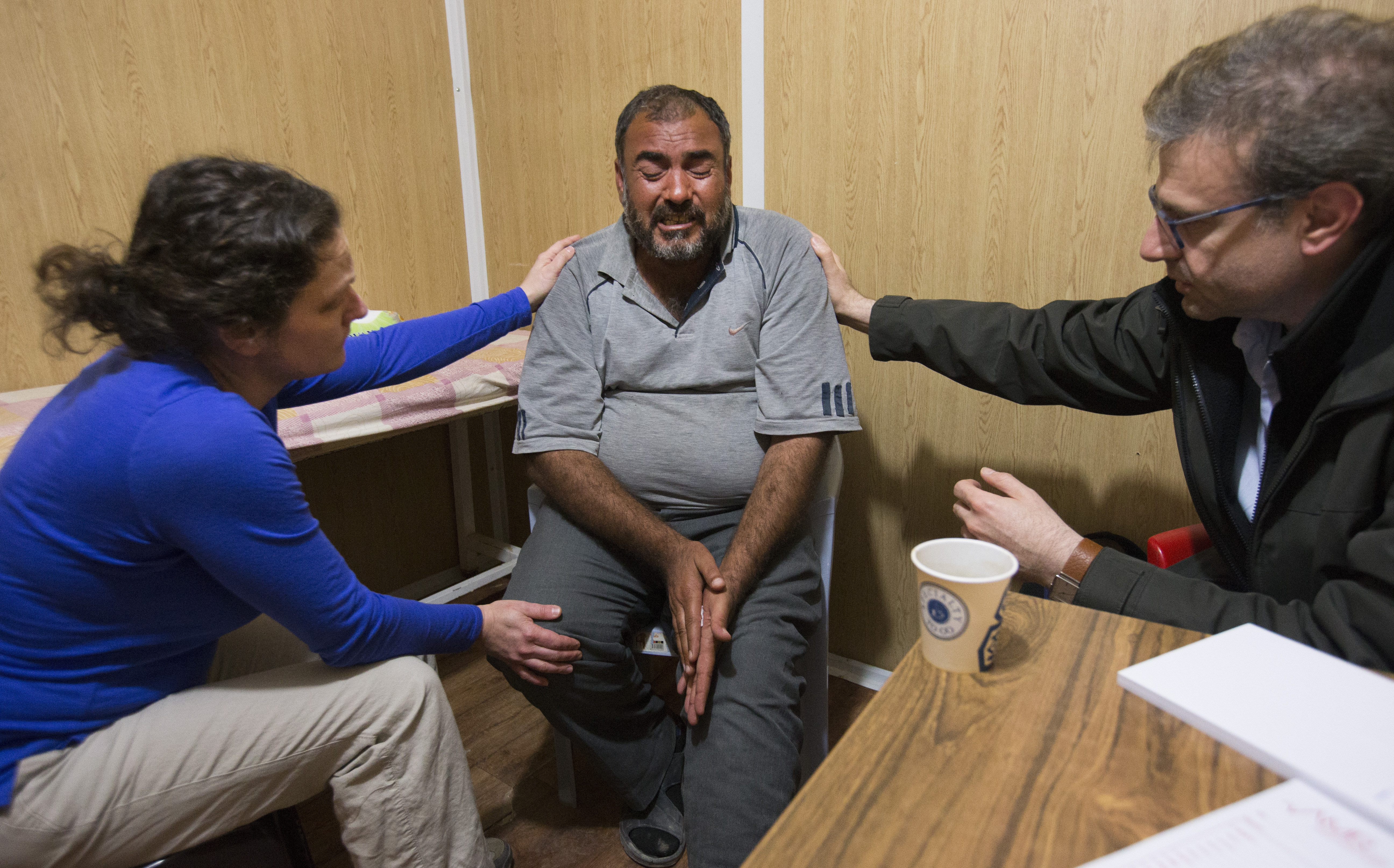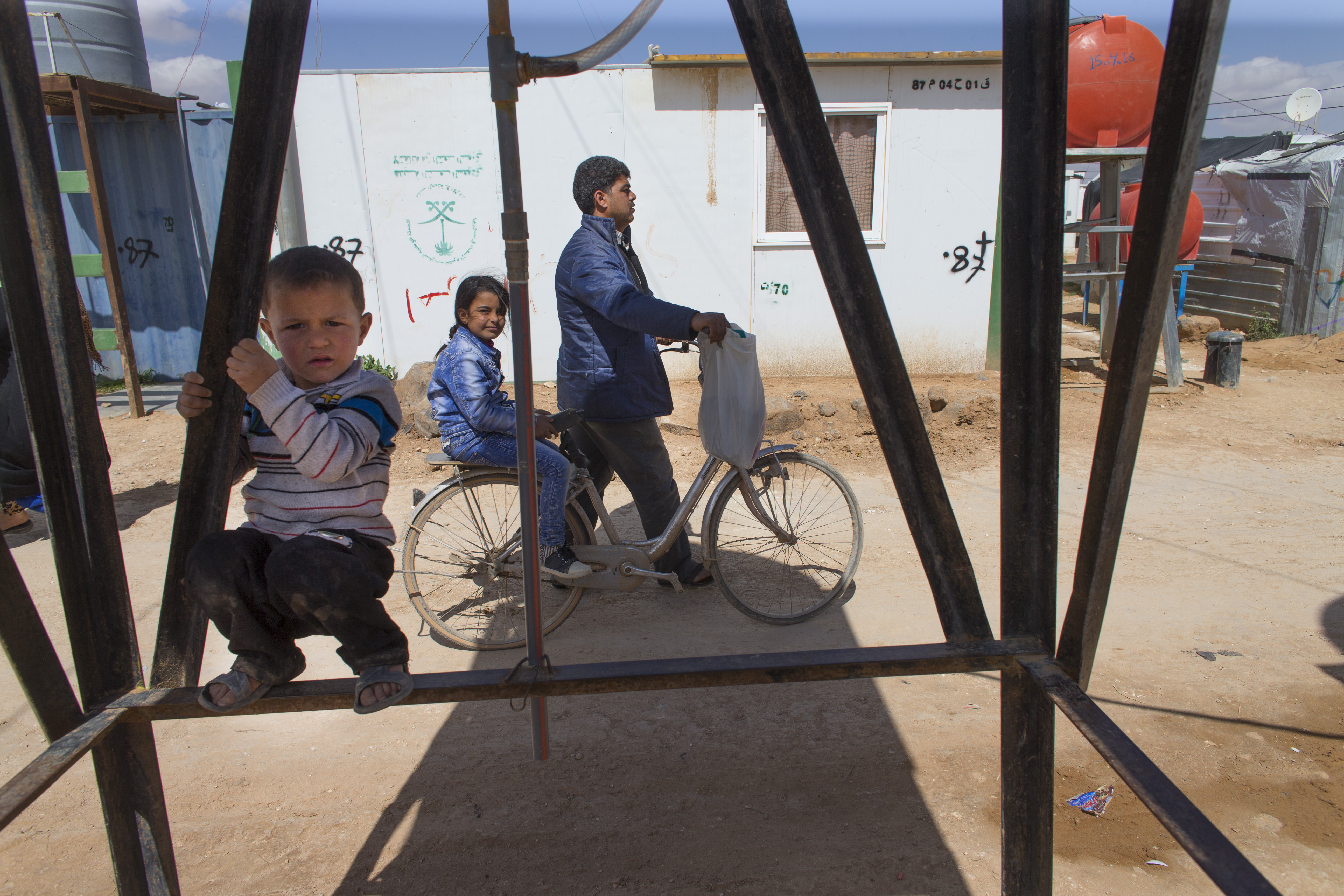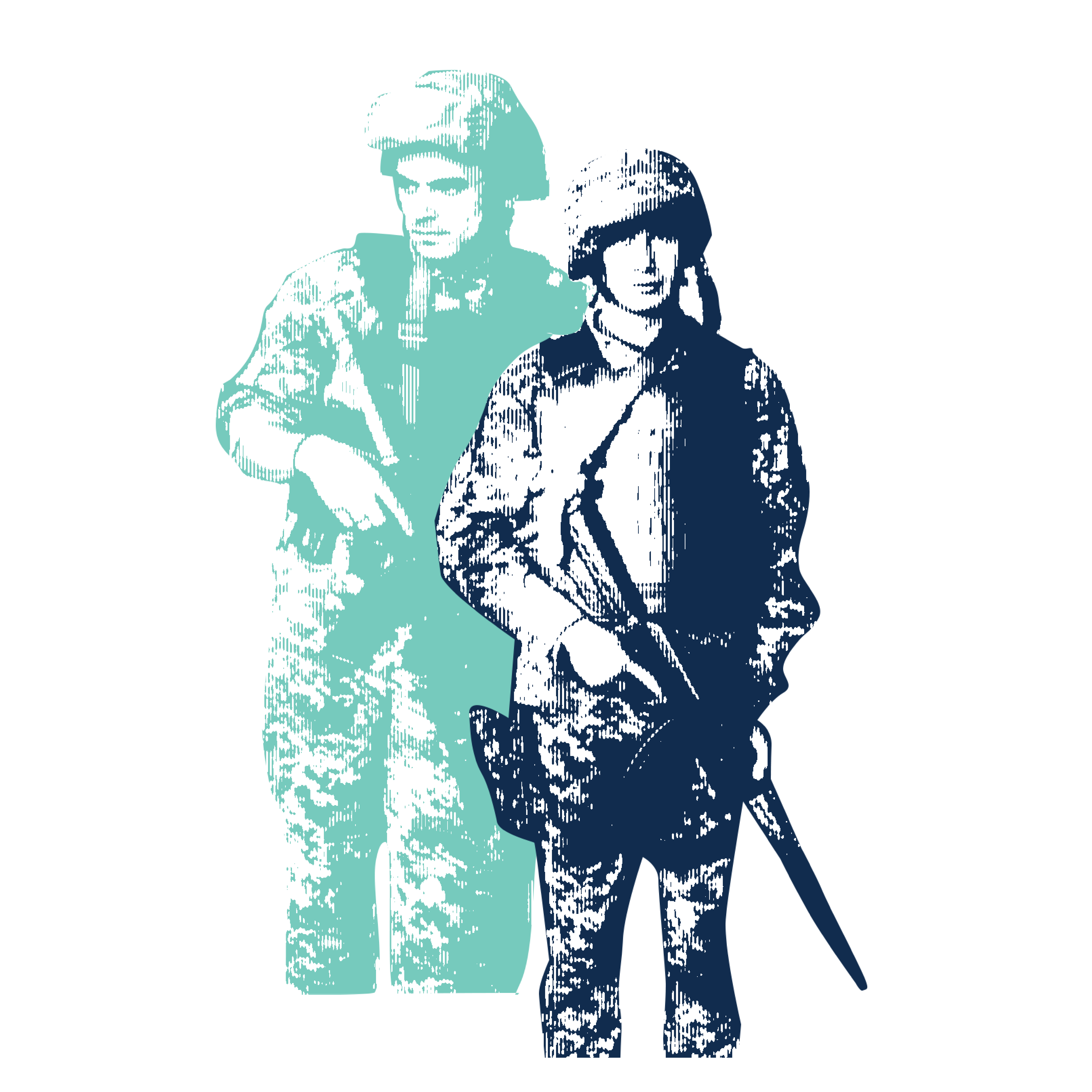
ZAATARI REFUGEE CAMP, Jordan—Photojournalists consider a camera a tool; sometimes they can be a shield or a filter.
A camera in the right hands can illuminate a wrong that needs to be righted. Frequently those images are of emotionally charged situations.
I was alerted to a man who had been whisked from the streets of Damascus without his family knowing his whereabouts and then was tortured by the Syrian regime for seven months because he was born in city that was considered disloyal to the government.
After being treated for scabies, the burly man entered the small box of a room to speak with social worker Stacey Volkman with group leader and Syrian-born pediatric neurologist Tarif Bakdash as an interpreter.
He wept as he embraced and kissed us before sitting down and telling his story.
He gave me permission to make a photo I knew we needed to get to the heart of the story we are covering.
The camera was my shield today when I was a few feet from him making photos as he wept and recounted what happened to him in a Syrian prison.
This sounds horrible, but while I am doing this I don't really hear or feel what he is saying; I'm just concentrating on capturing a moment.
I was given an opportunity to make a photo that not only will draw readers into reporter Mark Johnson's story, but one that I hope will change hearts and minds of how people think about an estimated nine million Syrian refugees.
Reflecting on it now, I am moved by what I have seen and heard. I'll be honest, if the roles were reversed I don't think I would have said "yes." Maybe he knows something I don't.
I hope that when this story is published he feels I did right by him of making and using one of those images.







